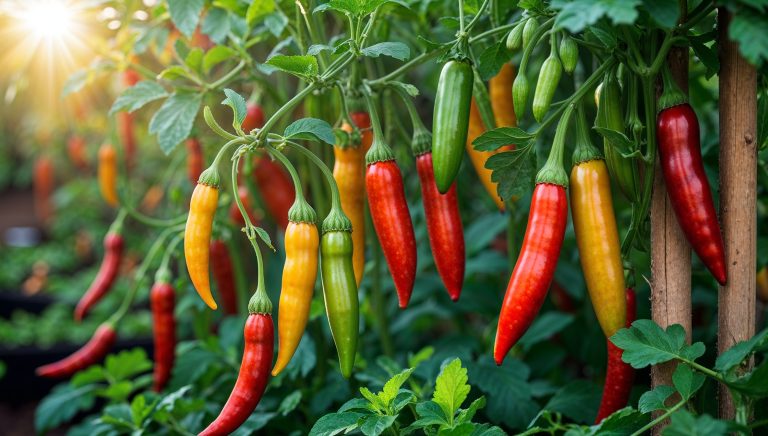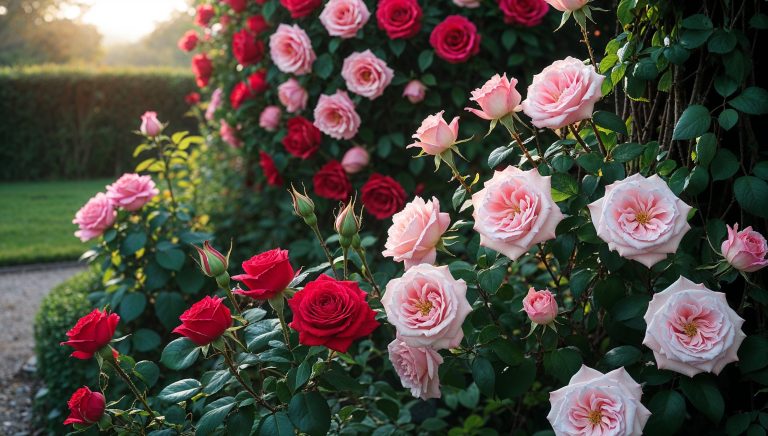Roses are one of the most beloved flowers in the world, prized for their beauty, fragrance, and variety. Whether you’re growing them in your garden or in containers, roses can thrive with the right care and attention. While they may require more maintenance than some other plants, the reward of seeing your roses bloom year after year is worth the effort. In this article, we will guide you through the essentials of rose care, from planting to pruning, and give you tips on keeping your roses healthy and blooming beautifully.
1. Choosing the Right Rose Variety
The first step in caring for roses is selecting the right variety for your garden or space. There are many different types of roses, each with unique needs and growth habits. Here are a few popular rose varieties to consider:
- Hybrid Tea Roses: These roses are known for their large, elegant blooms and long stems, making them ideal for cutting. They require a sunny spot and regular care but can bloom repeatedly throughout the season.
- Floribunda Roses: Known for their clusters of smaller flowers, floribunda roses are easier to maintain and bloom more profusely. They are perfect for adding color to borders or beds.
- Climbing Roses: These roses grow upward, making them perfect for trellises, fences, and arbors. Climbing roses require support to grow but can produce beautiful cascading blooms.
- Shrub Roses: Shrub roses are hardy and require less care than other varieties. They are great for beginners and can be used as hedges or background plants.
- David Austin Roses (English Roses): Known for their old-fashioned charm and fragrant blooms, David Austin roses combine the best of both modern and classic rose types. They are a beautiful addition to any garden and come in a wide range of colors and sizes.
2. Planting Roses
The proper planting of roses is key to their long-term health and success. Roses are best planted in the spring or fall, when temperatures are mild, and the soil is moist.
- Choosing the Right Location: Roses need at least 6 hours of direct sunlight per day to thrive. Choose a sunny spot with well-drained soil to plant your roses. Avoid areas that are too shaded or where water tends to pool, as this can lead to diseases and poor growth.
- Soil Preparation: Roses prefer slightly acidic to neutral soil (pH 6.0-7.0). If your soil is heavy or clay-like, amend it with organic matter such as compost to improve drainage and fertility. You can also mix in some sand or perlite to enhance soil aeration.
- Planting Depth: When planting a rose, dig a hole that is wide and deep enough to accommodate the root system. For bare-root roses, the graft union (the knobby area where the rose is grafted onto the rootstock) should be planted about 2 inches above soil level. For container-grown roses, plant them at the same depth as they were in the pot.
- Spacing: Roses need adequate space for air circulation to prevent disease. Space your roses at least 18-24 inches apart, depending on the variety. This will allow room for the plant to grow and spread without being overcrowded.
3. Watering Roses
Proper watering is essential for the health of your roses. While roses love water, they don’t like to sit in soggy soil. Here’s how to water your roses correctly:
- Watering Frequency: Water your roses deeply and thoroughly to encourage deep root growth. In general, roses should be watered once a week, but this can vary depending on the weather and soil conditions. During hot, dry spells, you may need to water more frequently.
- Watering Method: Water roses at the base of the plant, not overhead. Wetting the foliage can lead to fungal diseases like powdery mildew and black spot. Use a watering can or soaker hose to apply water directly to the soil, ensuring that the roots get plenty of moisture.
- Mulching: Apply a layer of mulch around the base of your roses to retain moisture, suppress weeds, and keep the soil cool. Organic mulch, like wood chips or straw, is ideal. Be sure to keep the mulch a few inches away from the plant’s stem to prevent rot.
4. Fertilizing Roses
Roses are heavy feeders and require regular fertilizing to encourage healthy growth and abundant blooms. Here’s how to fertilize your roses:
- Timing: Fertilize roses in early spring when new growth begins, and again in mid-summer, after the first flush of blooms. Avoid fertilizing in the fall, as this can encourage new growth that may not have time to harden off before the cold weather arrives.
- Types of Fertilizer: Roses benefit from balanced fertilizers that contain nitrogen, phosphorus, and potassium. You can use a granular rose fertilizer, liquid fertilizer, or organic options like fish emulsion or compost tea. Choose a fertilizer formulated specifically for roses or flowering plants to ensure it contains the right nutrients.
- Organic vs. Synthetic: Organic fertilizers, such as compost or well-rotted manure, improve the overall health of the soil and provide a slow release of nutrients. Synthetic fertilizers provide a quick nutrient boost, but they can sometimes cause a build-up of salts in the soil. Choose the fertilizer that best fits your gardening style.
5. Pruning Roses
Pruning is an essential part of rose care, helping to maintain plant shape, remove dead or damaged growth, and promote new blooms. Here’s how to prune your roses:
- When to Prune: The best time to prune roses is in late winter or early spring, just before new growth begins. For most roses, this is when you should do major pruning, such as cutting back old stems and shaping the plant. For repeat-blooming roses, you can prune lightly after the first flush of blooms in early summer.
- How to Prune: Always use sharp, clean pruning shears to make clean cuts. Remove any dead or damaged wood, cutting back to healthy tissue. For bush roses, prune back about one-third of the plant to encourage new growth. For climbing roses, cut back side shoots to promote stronger canes.
- Deadheading: Deadheading is the process of removing spent blooms to encourage the plant to produce more flowers. Simply snip off the faded flowers just above the first set of healthy leaves. This will help the rose continue to bloom throughout the season.
6. Dealing with Pests and Diseases
Roses are prone to a variety of pests and diseases, but with proper care, you can keep your plants healthy and free from damage. Here are some common problems and how to address them:
- Aphids: These small, soft-bodied insects suck sap from rose leaves and can cause distortion or yellowing. To control aphids, spray your roses with insecticidal soap or introduce natural predators like ladybugs.
- Black Spot: This common fungal disease causes black, circular spots on rose leaves, leading to yellowing and premature leaf drop. To prevent black spot, remove and discard affected leaves, improve air circulation, and apply a fungicide if necessary.
- Powdery Mildew: Powdery mildew appears as a white, powdery coating on the leaves, stems, and buds. It thrives in humid conditions. To prevent powdery mildew, avoid overhead watering, ensure good airflow, and apply a fungicide if needed.
- Japanese Beetles: These beetles feed on rose petals, causing significant damage. Hand-picking them off or using an insecticide designed for Japanese beetles can help protect your roses.
7. Winterizing Your Roses
Roses require special care in the winter to ensure they survive the cold months and bloom again the following spring.
- Mulching: In cold climates, apply a thick layer of mulch (about 6 inches) around the base of your roses to protect the roots from freezing. You can use wood chips, straw, or leaves for mulch.
- Covering the Plant: For additional protection, you can wrap the plant with burlap or cover it with a rose cone. This provides an extra layer of insulation and protects the plant from harsh winds and freezing temperatures.
- Pruning for Winter: In colder regions, prune your roses back slightly before the first frost. This helps the plant conserve energy during the winter months.
Conclusion
Caring for roses can be a bit more demanding than other plants, but the reward is well worth the effort. By selecting the right variety, providing proper planting and care, and addressing common issues like pests and diseases, you can enjoy beautiful, fragrant roses that bloom year after year. With the right attention and knowledge, your rose garden will become a stunning focal point in your landscape.

